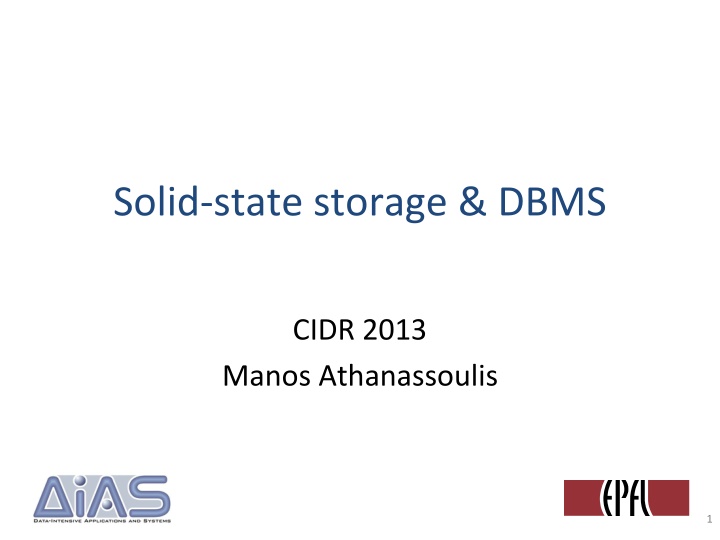Challenges and Opportunities of Using Flash in Database Management Systems
Exploring the integration of flash storage in DBMS presents various challenges such as performance instability and cost, while also offering opportunities for efficient random access and write caching. Re-architecting DBMS for solid-state storage and utilizing flash as secondary storage are key considerations in adapting to the evolving storage landscape.
Download Presentation

Please find below an Image/Link to download the presentation.
The content on the website is provided AS IS for your information and personal use only. It may not be sold, licensed, or shared on other websites without obtaining consent from the author.If you encounter any issues during the download, it is possible that the publisher has removed the file from their server.
You are allowed to download the files provided on this website for personal or commercial use, subject to the condition that they are used lawfully. All files are the property of their respective owners.
The content on the website is provided AS IS for your information and personal use only. It may not be sold, licensed, or shared on other websites without obtaining consent from the author.
E N D
Presentation Transcript
Solid-state storage & DBMS CIDR 2013 Manos Athanassoulis 1
Flash is replacing disks But, random writes on flash Instability in performance Shorter device lifetime And flash capacity is expensive Is flash ready/suitable for secondary storage? Reverse: Howcan DBMS exploit flash? Flash not a drop-in replacement for disks 2
Disks all over the place DBMS modules assumes disks Storage Buffer management Indexing Logging Lower-level: Block APIs Storage software stack Re-architect DBMS needed for solid-state storage Buffers 3
How to use flash in a disk-world? Buffers 4
How to use flash in a disk-world? As a specialized write cache Hides update overhead Buffers Updates 5
How to use flash in a disk-world? As a specialized write cache Hides update overhead As secondary storage Offers efficient random access Buffers 6
How to use flash in a disk-world? As a specialized write cache Hides update overhead As secondary storage Offers efficient random access Buffers As a regular cache level SSD Buffer 7
Flash, solid-state, DBMS: The challenges are far from done 8
Flash Wall Capacity: Density will plateau (soon) Endurance (already) 9
PCM, memristor and co More than flash: How to use persistent main memory? 10
Software stack is too slow 10000 4000 Device Latency (H/W) 1000 Latency ( s) 100 50 17 10 17 17 17 OS & FS Latency (S/W) 1 HDD Flash PCM 11
Flash Wall(s) Persistent main memory OS & FS too slow Thank you! Manos Athanassoulis 12























